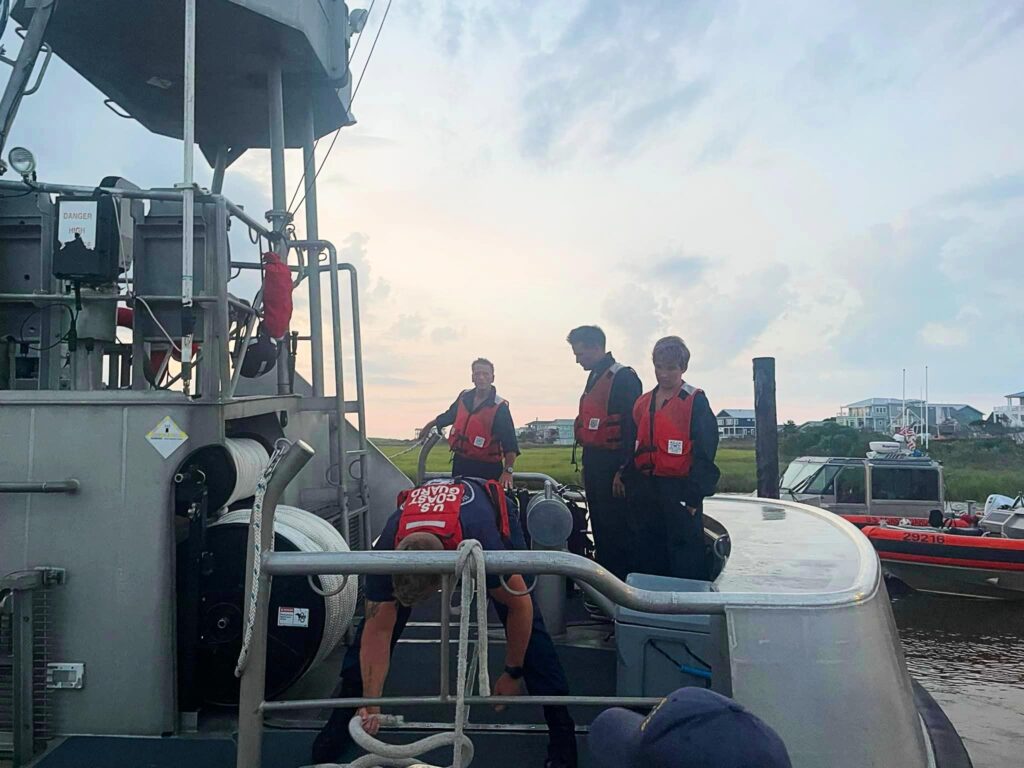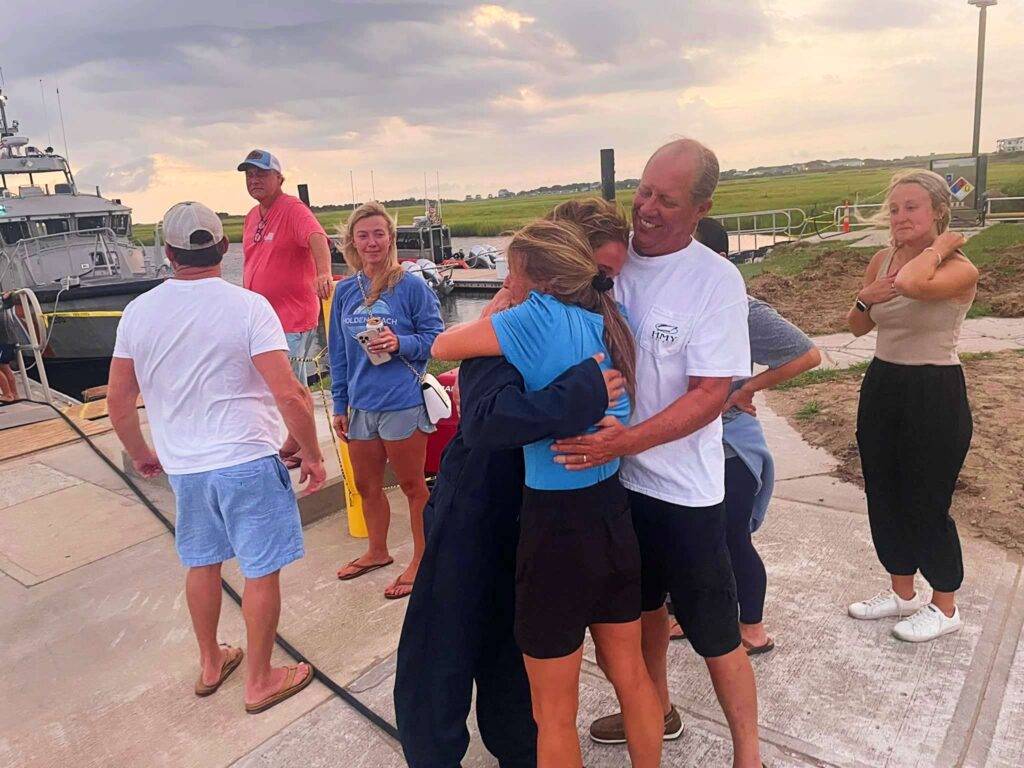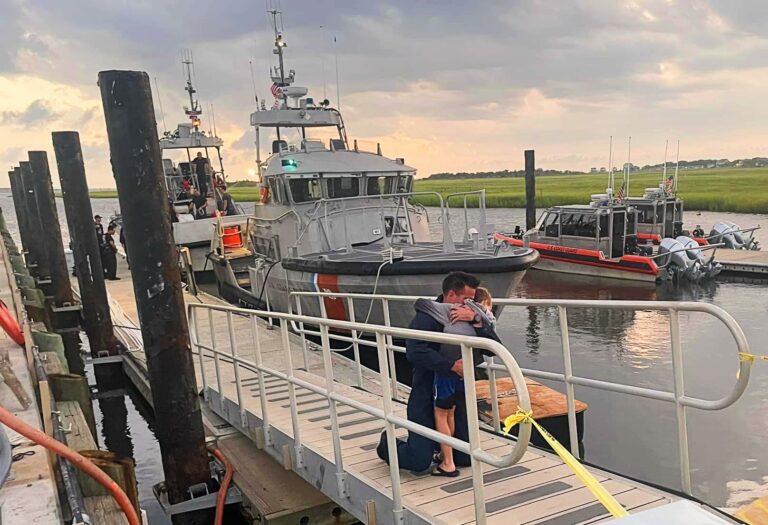Four male scuba divers were rescued from Atlantic waters on 14 August as the result of a US Coast Guard search operation that continued overnight, in collaboration with the US Navy.
The divers, 46-year-old orthopaedic surgeon Dan Williams and his 15-year-old son Evan; retired US Navy diver Ben Wiggins, 64, and Luke Lodge, 26, had been drifting for almost 18 hours by the time they were spotted and rescued – thanks to an observant pilot.
They had failed to resurface from a dive that had begun on the morning of 13 August, as reported on Divernet.
A boat called Big Bill’s had taken the divers on the two-hour journey out to Frying Pan Shoals, some 50 miles off Cape Fear in North Carolina. All were reasonably experienced divers and said to have been unfazed by what Wilmington TV station wwaytv3 reported to have been strong currents.

Having made an early start, the team started diving at around 9am. They caught lobster and were also spearfishing, catching grouper and snapper. However, the father and son surfaced from a dive to depths approaching 30m to find the other two flying their emergency flags.
The dive-boat could be seen but the captain and Williams’ two other sons had failed to spot the divers or hear their calls and whistling. The current rendered swimming towards the boat ineffectual. Lodge and Evan Williams did try leaving their dive-kit with the older men while they made the attempt unencumbered, but were forced to give up after about an hour.
By the time the four were back together as a group, it was after 11am. It would be another three hours before the boat finally disappeared from view. The captain raised the alarm at around noon.
Frying Pan Tower
The divers were able to track their position using their Garmin dive-watches, and by 3pm noted that they had already drifted more than 10 miles. They decide to make for a warning-light structure called Frying Pan Tower but the currents were moving them in the opposite direction, and by 5pm they had given up this tactic.
Soon afterwards they saw a Coast Guard helicopter, but the crew did not spot them. To the divers’ consternation, at 8.30pm and with darkness falling, a shark approached Evan Williams – but it appeared only to be checking him out.
By now Wiggins and Lodge were feeling the cold, because they were wearing thinner wetsuits than the Williams. All four divers huddled together to share body warmth, and said that they prayed. According to Williams he told his son: “God told me this isn’t it… He looked at me and just said I know, dad. He told me too.”
By midnight the divers had floated 27 miles, and they fell asleep. Williams says he was woken by a splash of water to see the lights of a distant aircraft. He switched on the strobe-light on his torch, and was rewarded by seeing the plane turn toward them – at which point he says he started to cry with relief.
It was the crew of a Coast Guard HC-130 Hercules aircraft that reported spotting the emergency light in the darkness, at 12:45am on 14 August. They dropped the men an inflatable life-raft and arranged with the destroyer USS Porter, which had been conducting a training exercise in the vicinity, to pick them up, at a location 46 miles south-east of Cape Fear River.
The divers were found to be unhurt, and were transferred to a Coast Guard lifeboat. It brought them back to its station near Wilmington in North Carolina soon after 6am, to be greeted by friends and family.

Apart from the Hercules, destroyer and lifeboat, the rescue had involved a Coast Guard helicopter and two cutters. “Any time the Coast Guard launches for a search and rescue case, it is always our hope and goal to be able to reunite those we are searching for with their friends and families,” said Captain Timothy List, commander of Coast Guard Sector North Carolina.
“In this case that is exactly what took place, which is always a great feeling for our rescue crews.”
Also on Divernet: Search for missing Keys diver called off, Stricter liveaboard rules follow fatal Conception blaze, Solved: Blackbeard’s shipwreck coal mystery, Divers map historic North Carolina wrecks

